HOW COVID-19
IS AFFECTING OUR
FOOD INDUSTRY
Our system of food production, distribution, and even consumption is changing on a daily basis in response to COVID. While no one can say for sure how this will all pan out, there are some emerging trends and I’ve tried to capture some of the most interesting ones here. I've organized the trends into a few key categories: Home Cooking, Restaurants, Grocery Stores and Production.
Scales of Time
I’m thinking about these trends in terms of near, medium and long term scales. Near term as it relates to the COVID crisis is the first several months of lockdown and phasing in and out of lock down, where we can’t go into buildings or realistically be near other people. The medium term is the time after lockdown until we have a reliable vaccine in place allowing us to sort of get back to business but still with restrictions that keep us from mass gatherings. And long term is when we have some kind of equilibrium, after we have a vaccine and it is safe to go back out and gather again. The long term is really about permanent behavior change that will stick with us after COVID is a memory.
Near term = lockdown, no gathering
Medium term = post lockdown, pre vaccine limited gathering
Long term = post vaccine, established new behaviors
Home Cooking
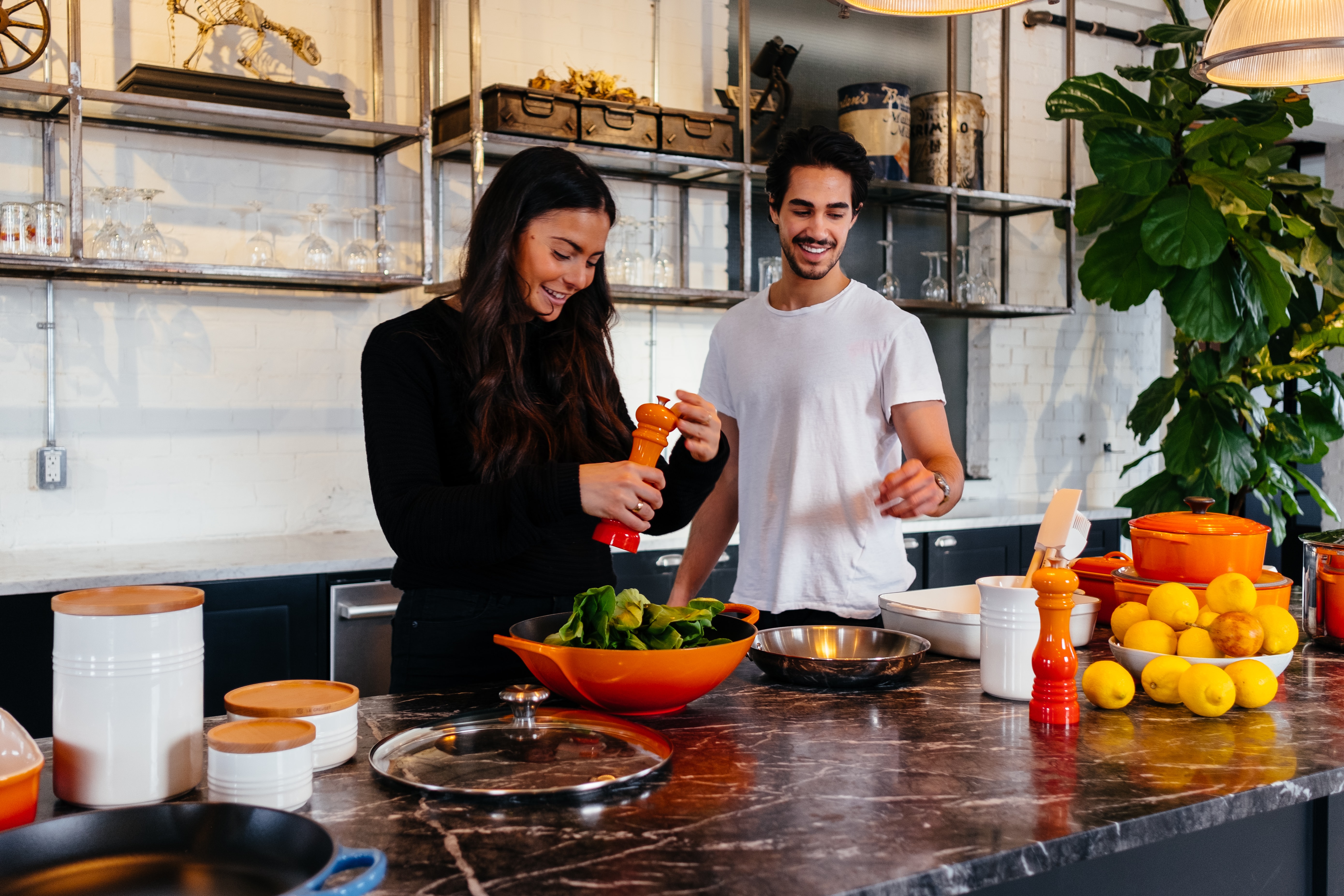
A Cultural Shift Towards Home Cooking
Our forced experience of cooking at home is unlocking a set of skills and foodways that will not be soon forgotten.
For the last 5 years America has spent more money at restaurants than at groceries. Surely some of this has to do with the cost of restaurants and the cheapness of certain grocery ingredients, but the trend has been undeniable. However under quarantine we are positioned for a rapid swing back in the other direction. There is no question that once people can go back to restaurants safely they will, but this extended “cooking school” experience that many have had, will remind them of their ability to cook. One thing to watch for will be the extent to which people go back to work and have less home time to cook, but doubtless there will be more people working from home from here on out than ever before, as businesses realize that its possible and more affordable for them. Another big change is the shift in food media and food culture to the less baroque and the more practical. So much of food culture and food writing has leaned toward the fine, but during our lock down we are seeing more practical, more frugality, more empathy for different approaches to cooking.
How will eating at home, growing our own food, and supply shortages affect the way we eat at home?
Near-term, Medium-term, Long-term
References
“Foodie Culture as We Know It Is Over” https://www.theatlantic.com/culture/archive/2020/05/foodiness-isnt-about-snobbery-anymore/611080/
“Americans putting more of their budget toward eating out” https://www.cnbc.com/2019/08/19/americans-putting-more-of-their-budget-toward-eating-out.html
“What coronavirus-fueled trends could linger post-pandemic?” https://www.foodnavigator-usa.com/Article/2020/04/13/From-scratch-cooking-to-home-baking-What-coronavirus-fueled-trends-could-linger-post-pandemic
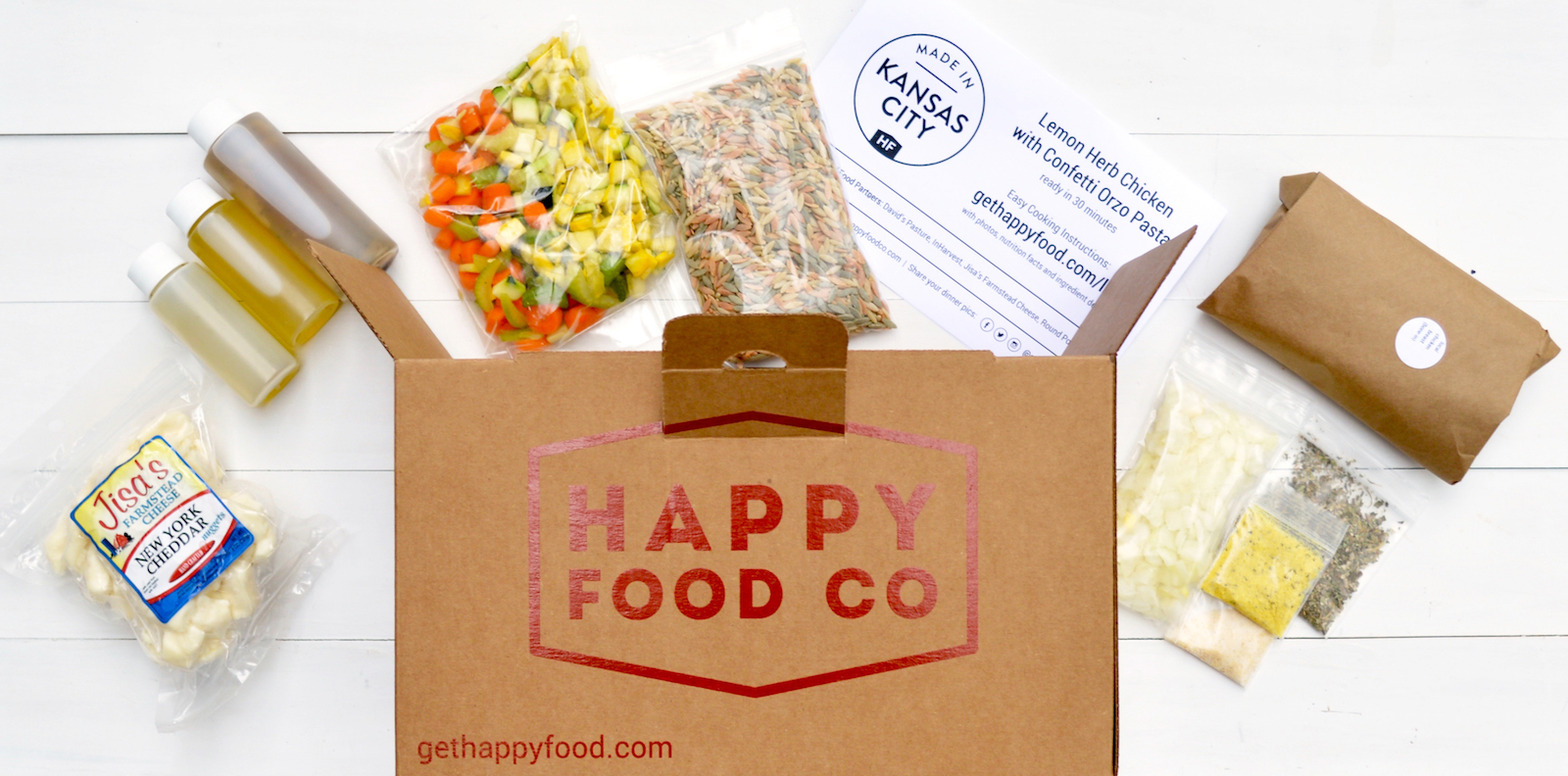
The Meal Kits Finally Click
While they’ve struggled in the past, meal-kits become a clutch service when stores are hard to get to and under-stocked.
Companies like Blue Apron and Green Chef have been a fascinating model but have struggled to maintain sticking power after a few months as people have just kept the recipe cards for the new meals in their repertoire and then gone to the cheaper grocery to make them. But now that grocery stores have become not only harder to get to, but seeing the inventory depleted and supply chains disrupted perhaps the ongoing use case for meal kits has finally landed. One of the bright spots for ongoing and cost management is meal kits at grocery stores, bundling the goods that are already in stock into easier to manage and deliver kits. And more and more restaurants will see the additional revenue value of selling kits on the back of reliable service especially as they are capacity limited in the coming months.
How can meal kit companies maintain their relevance when more traditional shopping ramps back up?
Near-term, Medium-term
References
“Home Cooks Trapped by Coronavirus Are Flocking to Meal Kits” https://www.eater.com/2020/3/31/21199913/home-cooks-pivot-to-meal-kits-blue-apron-hello-fresh-coronavirus-covid-19-impact
"Fresh Local Meal Kits from the Grocery” https://www.themerc.coop/mealkits
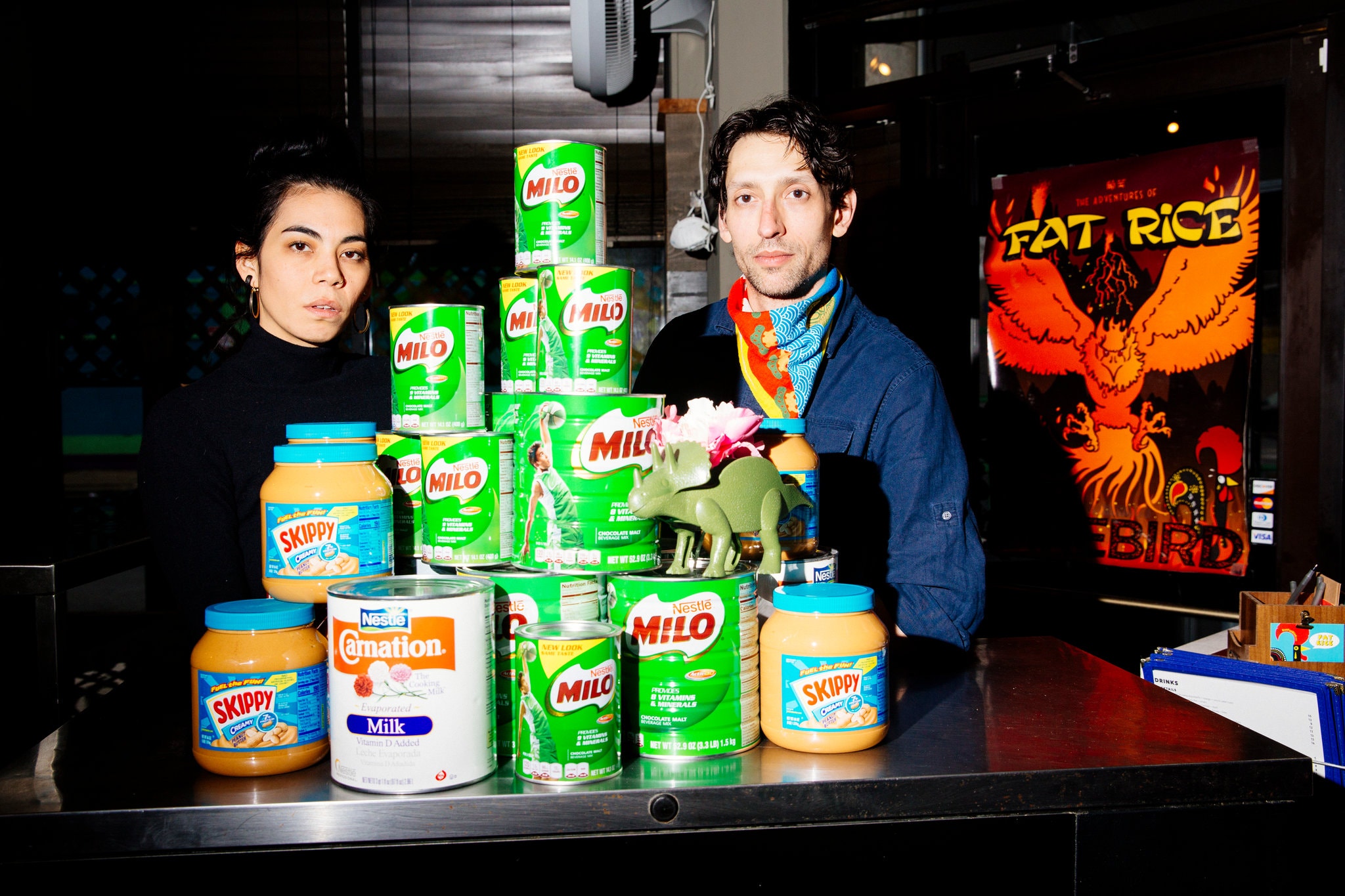
Restaurants As Media
Some restaurants are shifting to meal-kits and ingredient sales based on their popular dishes.
In the near-term–as no one can really go in any restaurant–former kitchens are retooling to be mini grocery stores selling the ingredients needed to make their food. What I find most interesting about this isn’t just the necessary pivot, but the longer-term implication that has been slowly happing for a while; the restaurant as the anchor of a media business. The kitchen becomes the lab coming up with recipes and ideas, providing meals or take out for you to taste and love, culminating in a cookbook, show, magazine or some other sellable media asset to help you connect with it more deeply. And now they are completing the cycle by providing the necessary ingredients to make the food at home. Restaurants offering meal kits and pantry boxes are not just a good diversification of revenue, it is also a way to keep vendors in business.
How can restaurants have a more diverse revenue stream and more completely offer their vision to people?
Medium-term, long-term
References
“Nyum Bai Will Be a Fast-Casual Restaurant When It Reopens After the Coronavirus Crisis” https://sf.eater.com/2020/4/24/21234935/nyum-bai-cambodian-closed-fast-casual-oakland-coronavirus
“Fat Rice, an Acclaimed Chicago Restaurant, Shifts to Meal Kits” https://www.nytimes.com/2020/04/28/dining/super-fat-rice-mart-chicago-coronavirus.html#click=https://t.co/h2YzaqUTaX
“How the COVID-19 Pandemic Is Inspiring Restaurants to Re-think the Way They Do Business” https://www.evokad.com/covid-19-inspiring-restaurants-to-rethink-business/

The Virtual Cocktail
While missing our gathering places, we are finding new patterns and tools for hanging out together.
So much of the first weeks of COVID have been about coping and commiserating and checking in on people. Zoom and FaceTime of course became a critical tool to connect us all but very quickly we started coming up with ways to replicate the bar experience to a greater fidelity. An industry of instagram cocktail recipes by noted bartenders, tools optimized for hanging out and paying actual bartenders, pre-made cocktail kits as a way to synchronize drinks amongst remote friends. On the one hand, this has only shown the poor medicine of virtually-hanging out–and the second we can come back together I think we will revel in physically doing so–but on the other hand, this will likely leave a long lasting memory of how to make drinks, and the ease of connecting with friends in other cities over a virtual drink.
How can virtual gatherings and meals have a greater fidelity?
Near-term
References
“How to Have a Successful Virtual Happy Hour” https://www.nytimes.com/2020/03/20/well/virus-virtual-happy-hour.html
"Custom built social tools for drinking and hanging out” https://www.goodhang.co
“The Pubs Are Closed, but Brits Keep Quizzing” https://www.theatlantic.com/international/archive/2020/04/britain-pubs-trivia-quiz-fun-coronavirus/609889/
“People are paying real money to get into virtual Zoom nightclubs” https://fortune.com/2020/04/14/zoom-nightclubs-virtual-bars-video-calls-coronavirus/

Semi-Handmade
Somewhere between take-out and meal kits, many restaurants are providing partially made meals.
We get take out for many reasons, ranging from wanting someone else to take care of dinner, to wanting to try something new, but there is a joy that comes from making your own food. We all want a sense of accomplishment and involvement and several places are trying to help create fresher, better quality take out that you have a hand in completing. From Comedor in Austin texting videos along with your delivery showing how to assemble their meals, to Mourad in SF altering their sauces to travel better, to par-baked pizzas, there are a number of ways for restaurants to bring you into the process while simplifying their operations and number of people required to make a meal. Longe-term, this suits a culture that still wants to have their hands on the final production of their meals with some of the production done out of the house.
How can restaurants give people something great and give them a sense of accomplishment and ownership over the meals they make?
Near-term, Long-term
References
“Reopenings, Resistance, and PPP Loans: How Food Businesses Nationwide Are Handling Coronavirus” https://www.bonappetit.com/story/food-businesses-covid-19
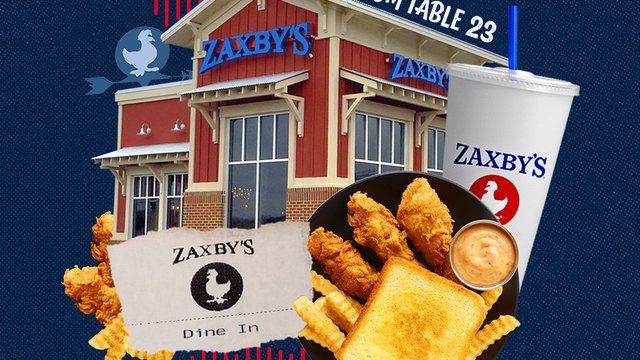
Delivering Surprise
Restaurants are looking to provide a more robust experience for take out diners.
One of the key experiences that restaurants provide is a sense of wonder and surprise, which is less common when you cook the food yourself. The serendipity of choosing something from a menu that just sounds good can be such a delight. As we transition to cooking more at home, clubs, subscriptions, and take-out can capitalize on delivering surprise as well as sustenance. One of the weirder but great examples of this has been Zaxby’s chicken chain creating a playlist of ambient restaurant sounds to accompany your take out. Could restaurants deliver the whole place setting, or have a more consultative conversation about the menu over the phone or zoom?
How can delivery give us a better overall experience rather than just sustenance?
Near-term, Long-term
References
“3 restaurateurs on how the battered food-service industry is weathering the coronavirus pandemic” https://fortune.com/2020/04/20/coroanvirus-restaurants-food-service-industry-takeout-delivery-covid-19/
“Zaxby's partners with SoundCloud to create ambient restaurant playlist” https://www.fastcasual.com/news/zaxbys-partners-with-souncloud-to-create-ambient-restaurant-playlist/
Restaurants

A Booth of Our Own
While we are weary or unable to gather too closely, we will need more semi-private space, doubling down on “being out” but still a bit isolated.
As restaurants reopen, we’re likely to see both a mandate towards limited capacity (50% occupancy rules) as well as a social fear of being too close to others. In some of the few restaurants that have reopened, we’re seeing scattered tables and awkward spaces to create the requisite social distancing. But we go to bars and restaurants often to connect with others and we are going to have to find some compromise. I think we will see a ramping up of booths, partly because they fit the space better than spaced-out tables, and partly because they provide a sense of protection from the rest of the space. Private rooms, like Irish Snugs (shown above) and Kissing Rooms, will likely see a resurgence as well, giving people and hosts a much safer way to interact at a distance.
How can restaurants create a sense of security for patrons without compromising too much on what makes going out fun?
Medium-term
References
“More intimate dinner locations at the Oosterdok soon!” https://www.mediamatic.net/en/page/377815/testing-serres-séparées-at-mediamatic-biotoop
“A Brief History of the Irish Snug” https://www.mentalfloss.com/article/93409/brief-history-irish-snug

Do You Have a Table Outside?
If we can’t have very many people inside our restaurants what if we turn the outside in to a restaurant?
50% capacity mandates are going to be a difficult flow of customers to survive on, and for many places the only way to make it through will be to increase total capacity. Evidence is suggesting that outdoor transmission of COVID is rare, so why not convert our streets into open air dining! It creates a lively environment that helps us feel connected to people in as safe a way that is possible while gathering. It gives restaurants and bars a larger space to work with to get capacity back in line with their productive margins. And it has the added bonus that it helps suggest to many what a car-free walkable city feels like. We should be looking at street closures for dining, sidewalk dining ordinances, parking conversion into parklets and back patio renovations.
How can we leverage our streets, sidewalks and public spaces to safely extend our restaurants seating capacity?
Medium-term, Long-term
References
“Lithuanian capital to be turned into vast open-air cafe” https://www.theguardian.com/world/2020/apr/28/lithuanian-capital-to-be-turned-into-vast-open-air-cafe-vilnius?CMP=Share_iOSApp_Other
“China study suggests outdoor transmission of COVID-19 may be rare” https://www.sfgate.com/science/article/China-study-suggests-outdoor-transmission-of-15229649.php
“NYC’s Restaurant Reopening Could Include Outdoor Seating On Closed Streets” https://ny.eater.com/2020/4/28/21239628/nyc-coronavirus-restaurant-reopening-plan
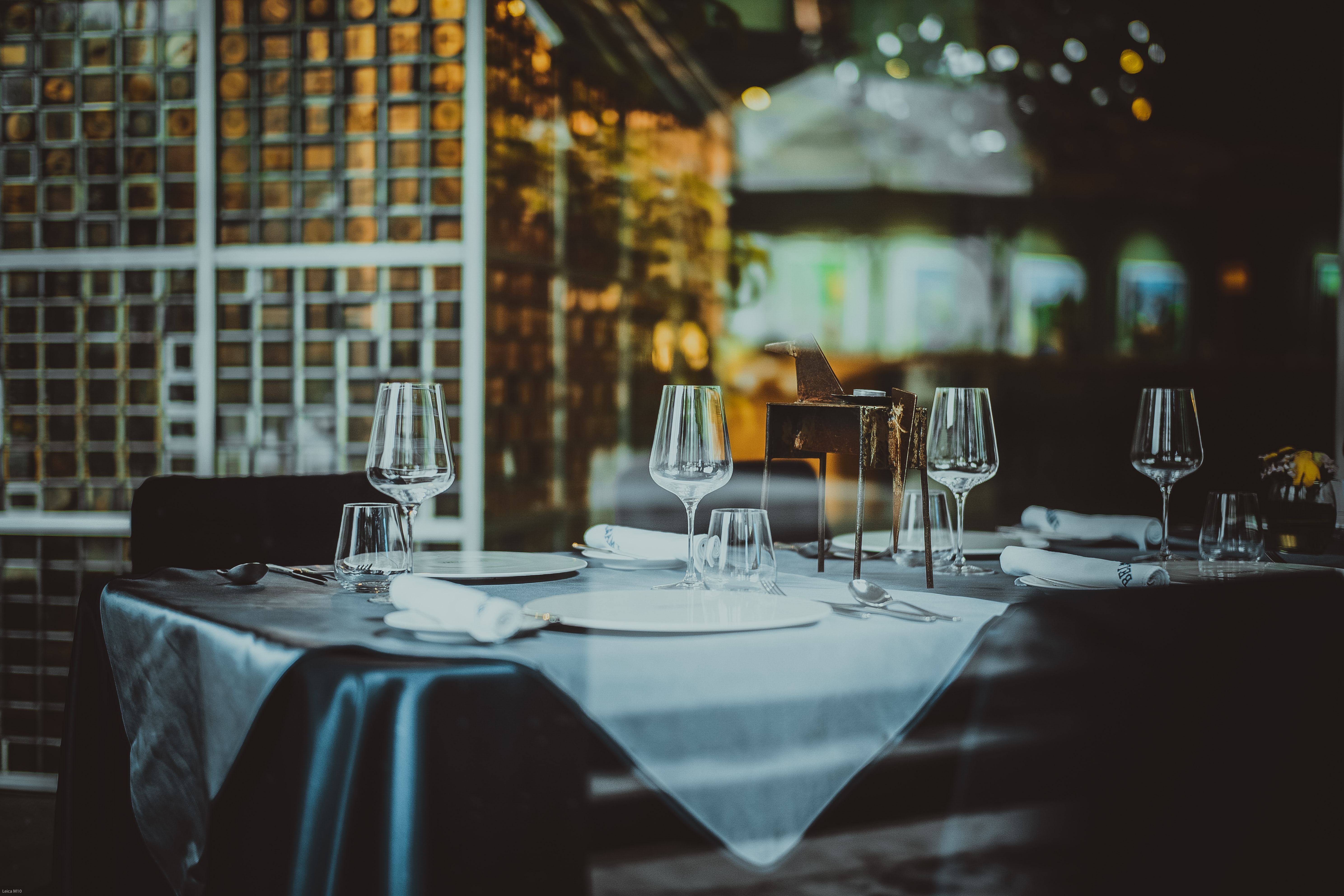
A Radically Different Service
As restaurants come back into action for dine in service, the experience is going to be kinda weird for a while.
All restaurants have some kind of ritual or service patterns that are core to their experience. But many of those, like communal tables, and glass and silverware on the table are not going to be tenable in the near to medium term. Restauranteurs are exploring spaced out tables, and protective cloches for the table ware that only the customer handles. At first this will be a strange echo of the place we remember, but it won’t take too long for people to start coming up with new ways to lay out spaces, and operationalize serving in new safer ways. Some of these will stick around as new habits. If “service” is perceived as being kinda hands on, what ways can we still give people attention that doesn’t involve being in their space? Private dining? Booths? Texting your server?
How can dine-in restaurants create a sense normalcy if people are anxious about being near other people?
Medium-term
References
“Barstool barricades, DIY table settings, and no, the chef won’t come say hello.” https://thecounter.org/covid-19-minneapolis-gavin-kaysen-restaurant-reopen/
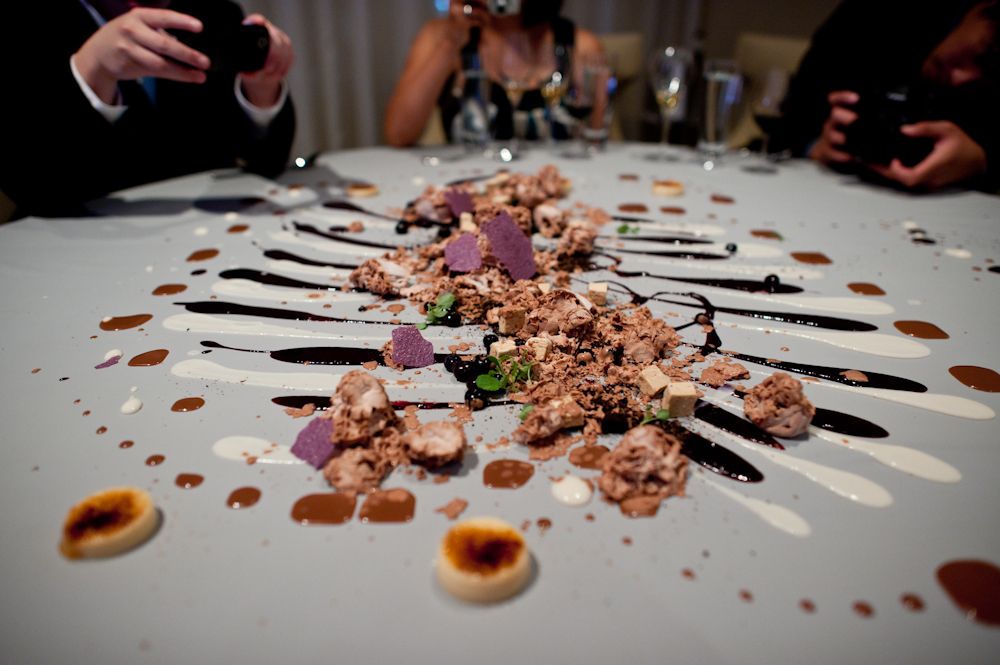
Theatrical Experiences
Restaurants can look to movie theaters for inspiration, a place that you go to for big things that you can’t get at home.
As we build new patterns of eating at home more often for the foreseeable future, restaurants might become a more special experience. What is going to compel people to go out again especially when they have good options for delivery and home cooking? A restaurant will have to become the thing you can’t do at home, the experience that you can’t provide yourself, the destination that is more amazing than your home. This has a corollary to the movie theater business, as more people have better home theater systems, theaters have become more about particular kinds of movies and social experiences, or theaters have built out better experiences that make them better than home theaters.
How can restaurants safely provide an experience better than delivery and home?
Medium-term, Long-term
References
“More foods you can't make at home” https://www.foodandwine.com/fwpro/restaurants-after-covid19-coronavirus-chef-predictions
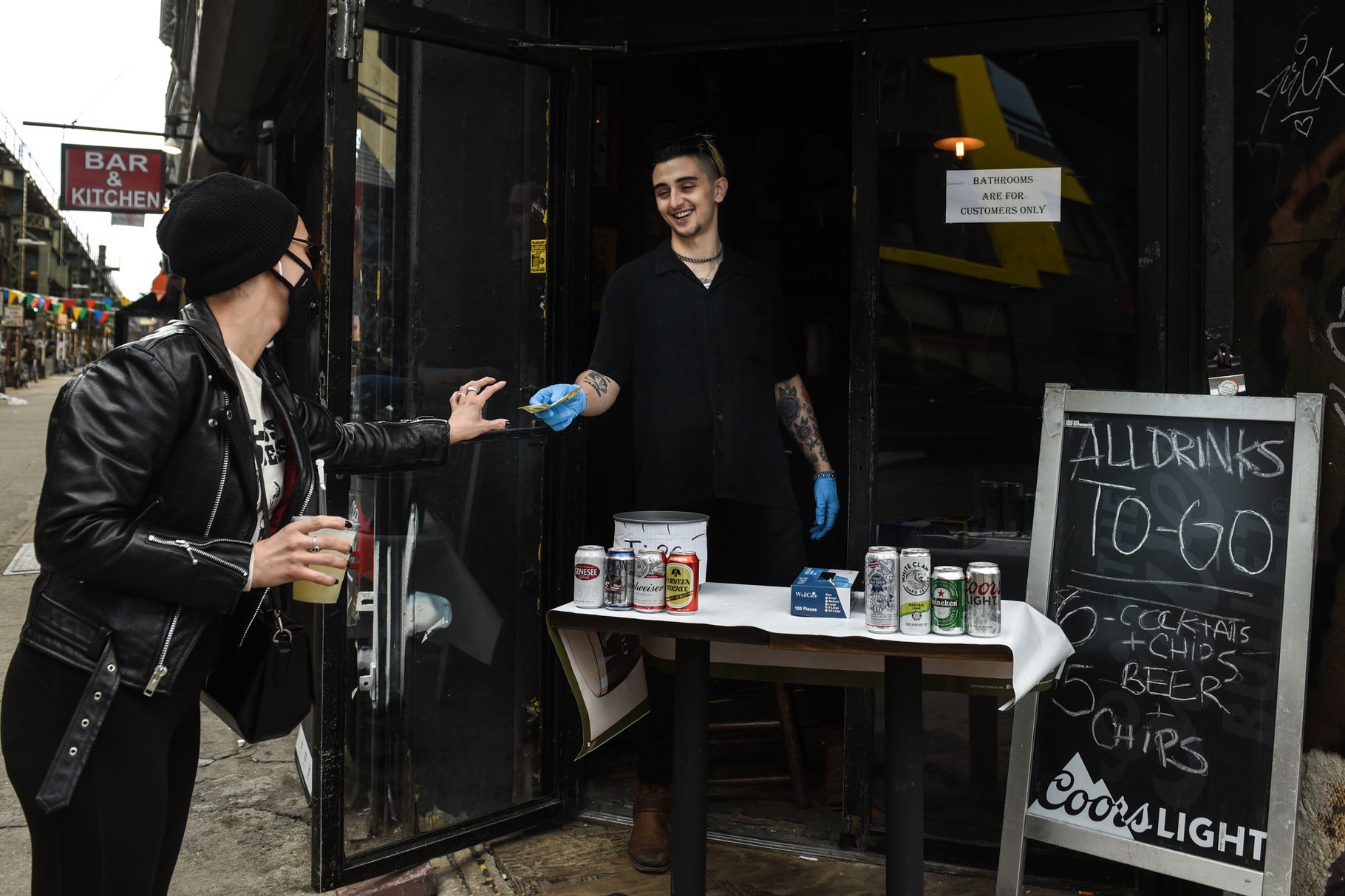
One for the Road
Temporary changes to the liquor laws are allowing some bars and restaurants to sell and deliver drinks to go.
Bars are going to be one of the hardest nuts to crack and slowest to recover as they require the opposite of social distancing. Many restaurants get 30% of their profit from drinks. One of the very first and frankly most surprising changes was to the liquor laws, in many places allowing delivery of drinks and cocktails as well as to-go drinks. This is temporary in most places, but as we will see bars and restaurants struggling for the next 18-24 months, this isn’t likely going away soon. Enabling to-go bars, and open carry of drinks in public places enables people to use our safer-than-indoors public outdoor spaces to eat and drink with friends.
How can bars encourage changes to the liquor laws that encourage better safer community gathering?
Near-term, Medium-term, Long-term
References
“It’s Maybe Time to Make To-Go Cocktails Legal” https://www.eater.com/2020/5/5/21246368/legalize-delivery-cocktails-permanently

The No-tipping Point
Tipping has enabled an unsustainable cycle of low wages and inequality between front and back of house.
While the trend of no-tipping restaurants has been on the rise in the US over the last several years, COVID has really shown the absurdity of tip-based minimum wages, with many states setting the minimum wage for tipped employees at $2.13. Back of house continues to get paid at standard minimum wages but this creates an inequality between front and back of house. This reset of how restaurants work is a great opportunity to create a more equitable payment structure for industry workers, and to level set with people about the actual cost of good food.
How can restaurants create a more equitable and sustainable salary model for all of its employees?
Long-term
References
“The coronavirus has laid bare restaurant workers’ ‘tip to mouth’ existence” https://thefern.org/2020/04/the-coronavirus-has-laid-bare-restaurant-workers-tip-to-mouth-existence/
“My Restaurant Was My Life for 20 Years. Does the World Need It Anymore” https://www.nytimes.com/2020/04/23/magazine/closing-prune-restaurant-covid.html
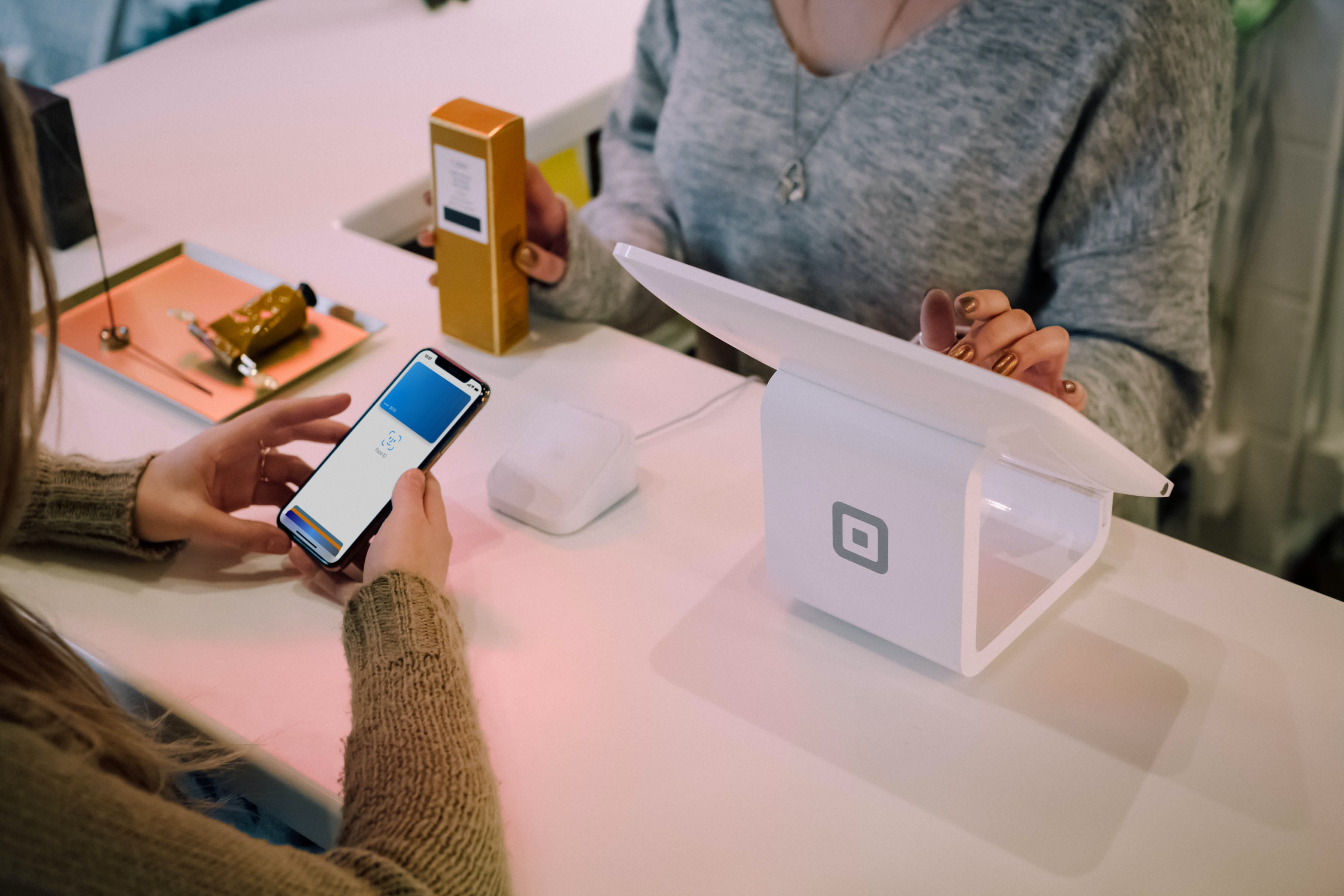
Contactless Payments Finally Touch Down
Handing over credit cards and touching machines will hopefully be a thing of the past
America’s payment infrastructure has been built almost entirely around the physical credit card and cash, both gross things to touch. Amazingly, almost overnight many businesses found ways to transition to contactless purchases, ranging from implementation of NFC and RF payment tools like Apple Pay and others, or using buy online pick up in store (BOPIS) type services, paying online in advance for curbside pick up. For many Americans, traveling outside of the US, its a surprise realizing that you almost never hand over your credit card and more and more contactless Mobile Proximity Payments has become the norm almost everywhere but here. This is certainly problematic for people that don’t have credit or are underbanked, but Amazon and PayPal are both working on prepaid options to at least help mitigate this problem.
How can we optimize the payment flow so that we never have to touch anything or hand anything over?
Near-term, Medium-term, Long-term
References
“BOPIS gains steam in wake of COVID-19 pandemic” https://www.retailcustomerexperience.com/news/bopis-gains-steam-in-wake-of-covid-19-pandemic/
“Mobile proximity payments 5 things retailers should know” https://www.pwc.com/it/it/publications/assets/docs/mobile-proximity.pdf
“The Future of Cash Transactions in Question Amid COVID-19” https://www.governing.com/now/The-Future-of-Cash-Transactions-in-Question-Amid-COVID-19.html

Hello Cleveland!
People looking towards smaller, more affordable cities to create new restaurants in the face of difficulties in expensive mega cities.
What’s that old chestnut quote? “America has only three great cities: New York, San Francisco, and New Orleans. Everywhere else is Cleveland.” With great apologies to Cleveland, America’s smaller cities are looking a little glossier than before. If you can’t afford to keep a restaurant in business in SF or NYC because of capacity limitations or outrageous rent, or an increasingly WFH business culture, then why not look at some of America’s great but less popular cities? Own a restaurant and own a home? That’s insane!
How can we make our smaller cities more welcoming and viable options for people looking for a future for their restaurants?
Medium-term, Long-term
References
“The Great American Migration of 2020: On the move to escape the coronavirus” https://www.washingtonpost.com/politics/coronavirus-great-american-migration/2020/03/28/b59d4d44-6f6f-11ea-a3ec-70d7479d83f0_story.html
“Amazon’s Work From Home Policy Extended to October Could Spell Disaster for Nearby Restaurants” https://seattle.eater.com/2020/5/1/21243749/amazon-lets-employees-work-from-home-until-october-seattle-restaurants-effect
Grocery Stores

Finally Online
Groceries and markets are having to develop contactless browsing and inventory management for the first time.
The grocery business is notoriously low-margin and has been reticent to make big capital intensive changes or upgrades, but all of that is changing with COVID. Many large chains don’t have real-time inventory management systems which is what has led to substitution orders, and many smaller operations don’t have online transaction engines. Online ordering and curbside pickup has been an incredible boon for companies that have prepared for this, like Walmart, but other marketplaces have sprung up to mail groceries, to do CSA home delivery or to ship dry goods. What was a slow transition towards online grocery shopping got an insane slingshot into action and its pretty likely its going to leave a mark on the grocery industry with some reports showing 97% of shoppers that have used online grocery shopping and curbside pickup wanting to keep doing it. The great diversification of how people grocery shop has begun and one of the big opportunities is to act as an aggregator of many of the things that are now available DTC from many different locations. The big challenge is for stores to create a compelling online experience that takes into account how food merchandising is different from electronics and apparel and how people HATE substitutions in their orders.
How can grocery stores evolve to provide more modern, safe and flexible browsing and delivery options?
Near-term, Medium-term, Long-term
References
Online only grocery store https://ungrocery.com
“The SupermarketAfter the Pandemic” https://www.theatlantic.com/technology/archive/2020/04/how-youll-shop-for-groceries-after-the-pandemic/610135/
“How the coronavirus crisis is changing grocery shopping” https://www.supermarketnews.com/center-store/how-coronavirus-crisis-changing-grocery-shopping
“After COVID-19, what happens to the grocery industry?” https://www.zdnet.com/article/after-covid-19-what-happens-to-the-grocery-industry/
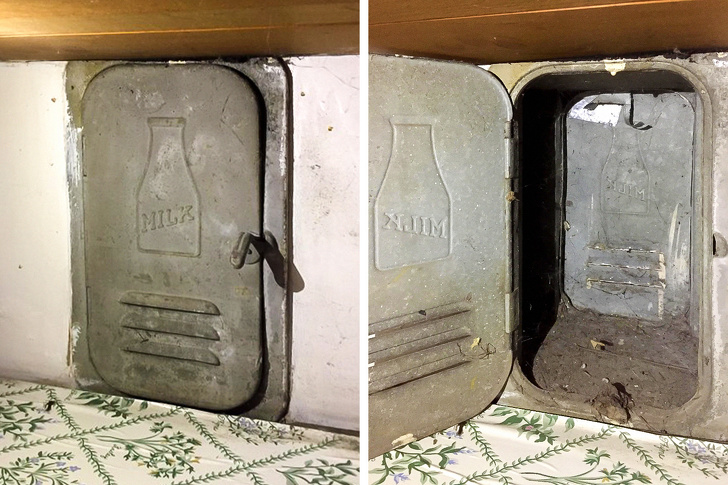
The Refrigerated Mailbox
Better infrastructure for perishable food delivery that doesn’t require infinite amounts of dry ice.
What comes around goes around, and our houses used to be built for all kinds of home delivery. From a milk door that allowed fresh milk to be put right inside our house, to a special room for your refrigerator so that the ice delivery man could bring it right in to your ice box. As we veer back towards more home delivery our infrastructure is woefully unprepared. We need refrigerated boxes for delivery agents to leave food in, and we are starting to see this in hyper urbanized areas. High-rise apartments are starting to see refrigerated lockers and “mail-rooms” that allow for just-in-time delivery of everything from hot meals to fresh produce without you having to be there to receive it. In more suburban homes we need a secure way for CSA boxes and grocery delivery to be left when we are away.
How can architecture respond to the need for more permeable homes allowing deliveries to safely come and go?
Near-term, Medium-term, Long-term
References
"Refrigerated Mailboxes and Lockers" https://www.parcelpending.com/locker-solutions/refrigerated-lockers/
“Think Outside the Icebox” https://www.us.jll.com/en/views/think-outside-the-icebox
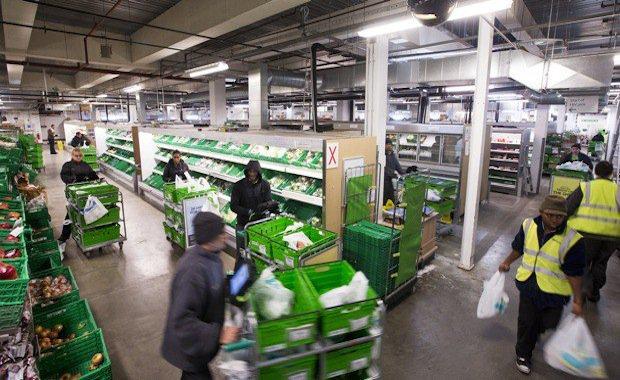
Ghost Kitchens and Dark Stores
Grocery and restaurant spaces optimized for delivery and workers not customers.
Dark stores generally describe a grocery store that has been converted to be used by delivery drivers rather than customers as a way to ensure capacity and inventory. Ghost Kitchens are restaurants and prepared food kitchens that are not necessarily attached to a dining room or walkup window. These options are both very interesting models post-COVID as they allow for delivery and outdoor businesses spin up quickly without too much infrastructure cost. Right now many restaurants & groceries compete for prime real estate, but if people don’t have to come into your store or you don’t have to worry about parking. These places can be in more affordable, out of the way regions of cities that allow the margins on these business to be a little less tight.
How can groceries build more optimized warehouse environment to improve the delivery experience and reduce overhead?
Medium-term, Long-term
References
“Amazon's Woodland Hills supermarket is now a dark store" https://www.grocerydive.com/news/amazons-woodland-hills-supermarket-is-now-a-dark-store/575953/
“Fuku’s National Expansion Plans Could Hinge on Ghost Kitchens” https://www.eater.com/2020/4/16/21222880/fuku-national-expansion-plans-ghost-kitchens-reef
“Farm to Table? More Like Ghost Kitchen to Sofa” https://www.nytimes.com/2019/12/24/style/ghost-kitchen-food-delivery.html
“A New Incubator Gives Furloughed Chefs a Chance to Open Their Own Restaurants” https://sf.eater.com/2020/5/7/21250549/hi-neighbor-incubator-robin-song-junju-ines-schmaltz-attagirl-furloughed-chefs
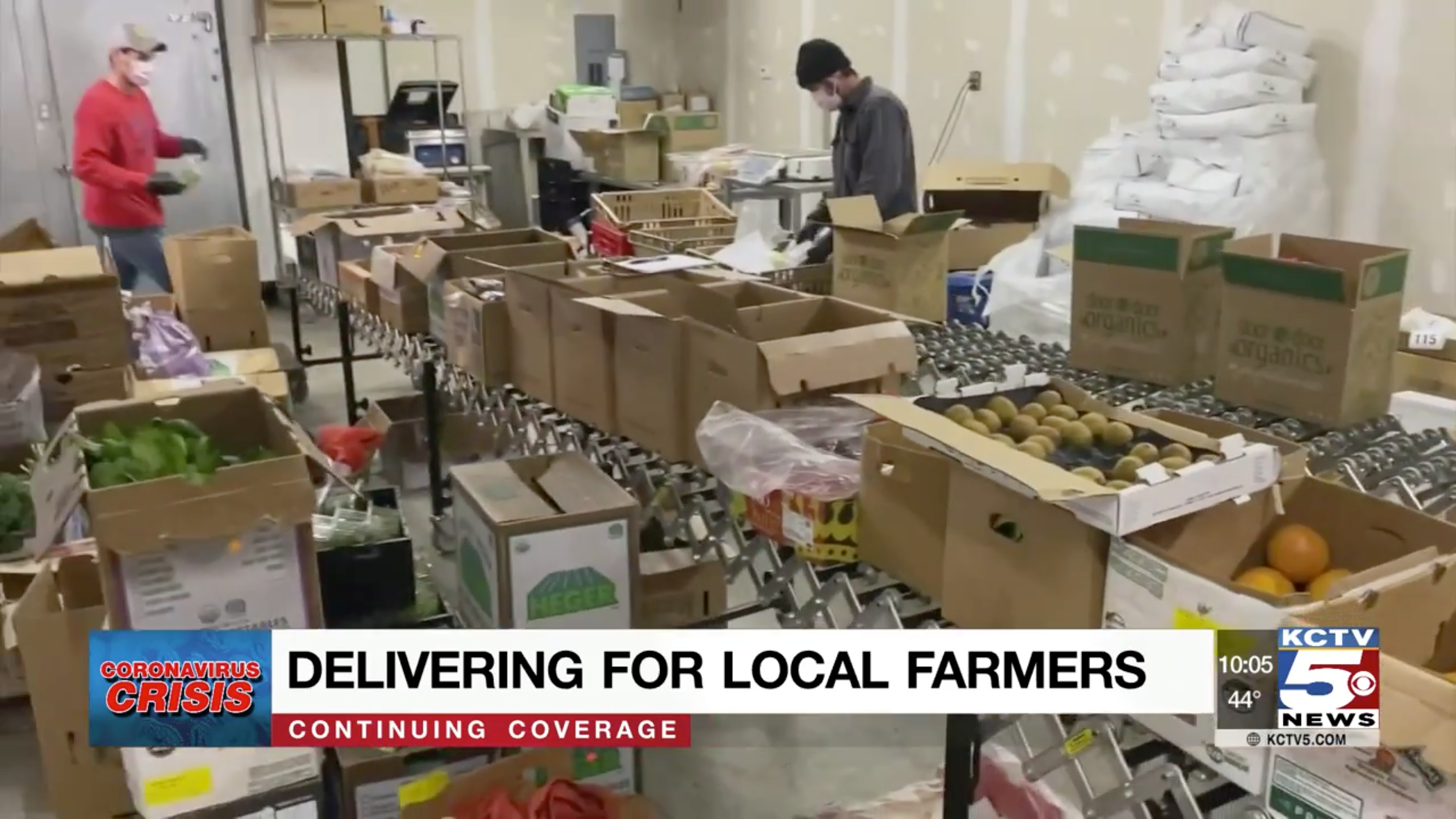
Distributors go Direct
Restaurant and grocery suppliers are going direct to consumer and building possibly lasting new customer relationships.
If we are to have any hope of restaurants reopening and grocery stores surviving, the distributors have to stay in business. Businesses that supplied restaurants were caught with no outlet for their products pivoted almost overnight to finding ways to get food to customers. This has been critical not just for ensuring that the distributors will be there after recovery, but also for farmers and producers were caught suddenly without a market. The biggest question is what effect this will have when we bring restaurants back online. Will these distributors that have built up operations and relationships with consumers go back to just serving restaurants or will some of them be new players in the grocery space? In many cases this suggests an interesting delivery/pickup-only dark-store type model that has slightly better margins than a traditional store.
How can distributors create a long lasting model that helps consumers and stores without a conflict of interest?
Near-term, Medium-term
References
“Food distributors sell to general public amid COVID-19 pandemic” https://www.thedenverchannel.com/news/national/coronavirus/food-distributors-sell-to-general-public-amid-covid-19-pandemic
“New Lawrence business offers grocery delivery, pickup options” https://www.kctv5.com/coronavirus/new-lawrence-business-offers-grocery-delivery-pickup-options/article_760caaa2-6e3f-11ea-a933-83d8f57556f4.html
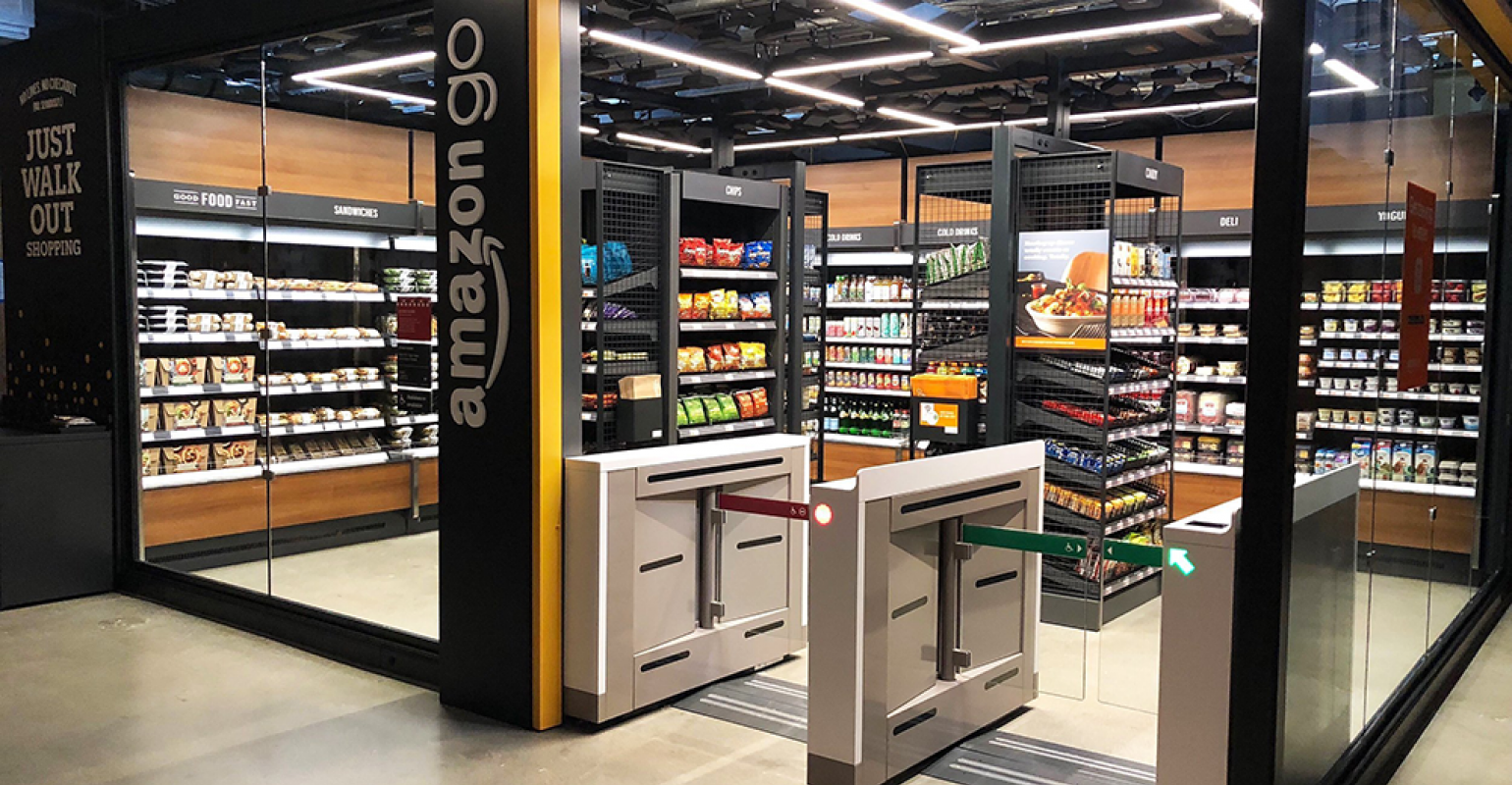
Touchless Stores
Many grocery stores are exploring ways to get people in and out without having to touch anything other than their food.
AmazonGO was one of the first and certainly highest profile of the stores to go touchless with their just walk out technology. It allows people with the app on their phones to walk in grab what they need and walk out the door, trusting their phone and the store’s network to figure everything out in the background. Other companies are looking to augment existing stores with AI and Machine Vision to recognize the items in your hand or cart without having to touch a register or passing anything to a checker. And beyond transactions even the ingredients are going touchless, with more food wrapped in plastic or clamshells to communicate its cleanliness.
How can grocery stores limit the opportunities for transmission of COVID?
Near-term, Medium-term, Long-term
References
“As coronavirus hits hard, Amazon starts licensing cashier-free technology to retailers” https://www.marketwatch.com/story/as-coronavirus-hits-hard-amazon-starts-licensing-cashier-free-technology-to-retailers-2020-03-31
“Shekel introduces touchless, machine learning self-checkout for supermarkets” https://www.kioskmarketplace.com/news/shekel-introduces-touchless-machine-learning-self-checkout-for-supermarkets/
“Plastic packaging: Hero or villain in the coronavirus era?” https://www.foodnavigator.com/Article/2020/04/01/Plastic-packaging-Hero-or-villain-in-the-coronavirus-era
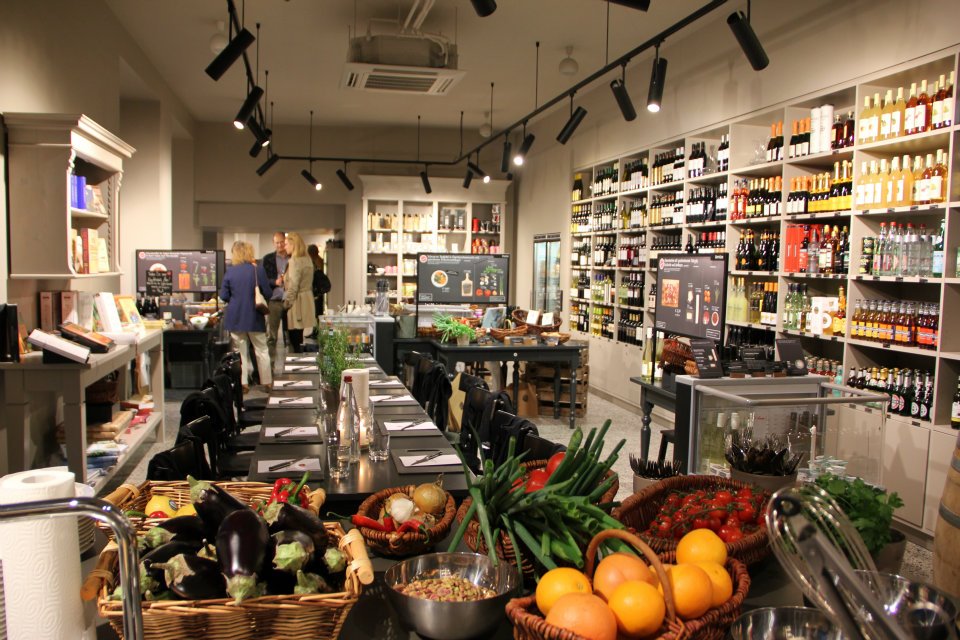
Story Stores
A new grocery store model that helps you find ideas and ingredients for what to make, rather than being a warehouse of ingredients.
Kochhaus in Berlin has created a grocery model that is less about having a large inventory, and more about inspiring you and helping you find what to make tonight. They lay out 10 or so meals on tables each day, often allowing for tasting and dining there, and then provide all of the ingredients to make that meal. This more editorial approach to grocery retailing focuses more on the story of dinner rather than the warehouse approach of having everything all the time. A model like this really suits seasonal produce as you can just highlight what you have. This model is one that could really help streamline the grocery process in the medium term, as it limits the amount of browsing necessary and simplifies what stores need to do with a possibly reduced staff.
How can grocery stores play a bigger role in recommending what people can make and how to make it?
Medium-term, Long-term
References
“In Berlin, Kochhaus Is Revolutionizing Grocery Shopping” https://www.foodrepublic.com/2012/08/09/in-berlin-kochhause-is-revolutionizing-grocery-shopping/
“A Streamlined Approach to Eating at Kochhaus” https://www.nytimes.com/2010/10/06/arts/06iht-koch.html

Snap awareness and optimization
A growing awareness of SNAP and WIC benefits are driving more conscientious shopping behavior.
The Supplemental Nutrition Assistance Program (SNAP) and Women Infants & Children (WIC) programs help provide people in need with food. Unfortunately these programs come with all kinds of arcane rules about what people are allowed to eat. Products labeled with WIC are the only things available to the program, and benefits become available at the beginning of the month. For many people who just don’t think about these benefits, there has been a movement to help make people more aware of the difficulties shopping on these programs, by leaving WIC labeled products on the shelves at the beginning of the month. With a sharp increase of applications for benefits, a better, more empathetic approach to not depleting eligible items and an effort to allow hot food to be purchased with SNAP, more people than ever are realizing what a vital need this program supports.
How can we make more items available, de-stigmatize the process, and improve online and contactless shopping for benefit recipients?
Near-term, Medium-term
References
“Viral tweet asks grocery customers to be mindful about WIC items. Here's why” https://www.usatoday.com/story/money/2020/03/17/wic-tweet-asks-grocery-customers-watch-labels-heres-why/5066040002/
“As Jobless Claims Soar, More Restaurants Might Finally Be Able to Accept SNAP Benefits" https://www.eater.com/2020/4/28/21240530/restaurants-accepting-snap-benefits-food-stamps-snap-carry-act-chris-murphy-jimmy-panetta
Food Production
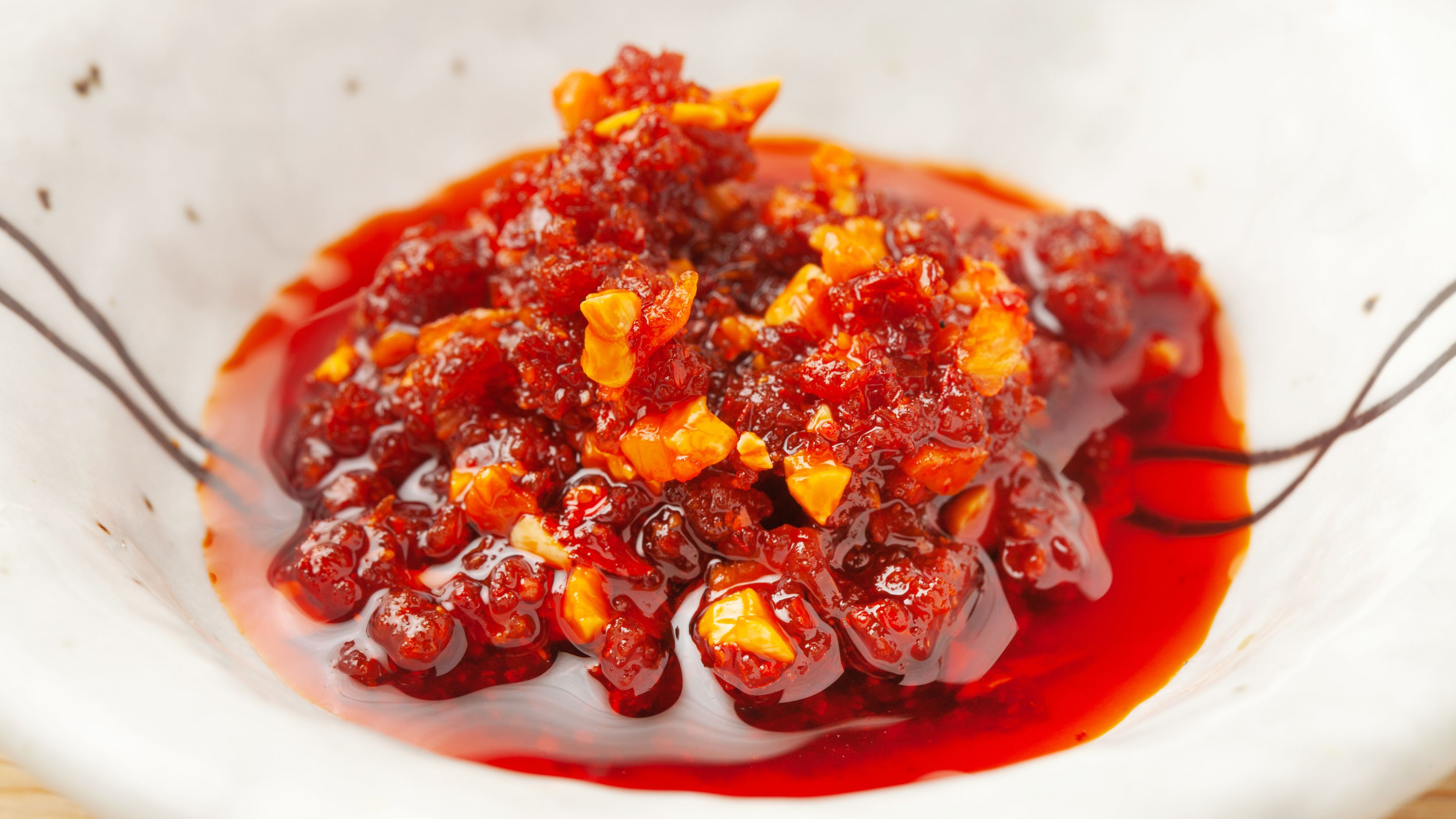
A lot of people are Dreaming
Recessions and times of great change often drive innovation and career resets to that idea you’ve always wanted to do.
With people out of work or faced with doing something unfulfilling in the face of an existential crisis, many take that leap to start the business they’ve always wanted to. Others do it because the don’t have a choice, making a food or ingredient they need and can’t get for whatever reason. Many great food businesses were started in in the last great recession of 2008, like INNA Jam in the Bay Area, great breweries and distilleries, and so many empires that started in food trucks. New ways of serving food, new ingredients (how many chili crisp companies are being hatched right now?!), and new local human-scale farms are all likely to see the world in the coming months.
How can we make it easier for people to transition towards entrepreneurialism in the wake of COVID?
Medium-term, Long-term
References
“The Recession-Era Entrepreneur” https://www.eastbayexpress.com/oakland/the-recession-era-entrepreneur/Content?oid=2602720
“Chili Oil is So Hot Right Now” https://www.eater.com/2020/5/4/21240144/chile-oil-chili-crisp-pantry-staple-trend-explained
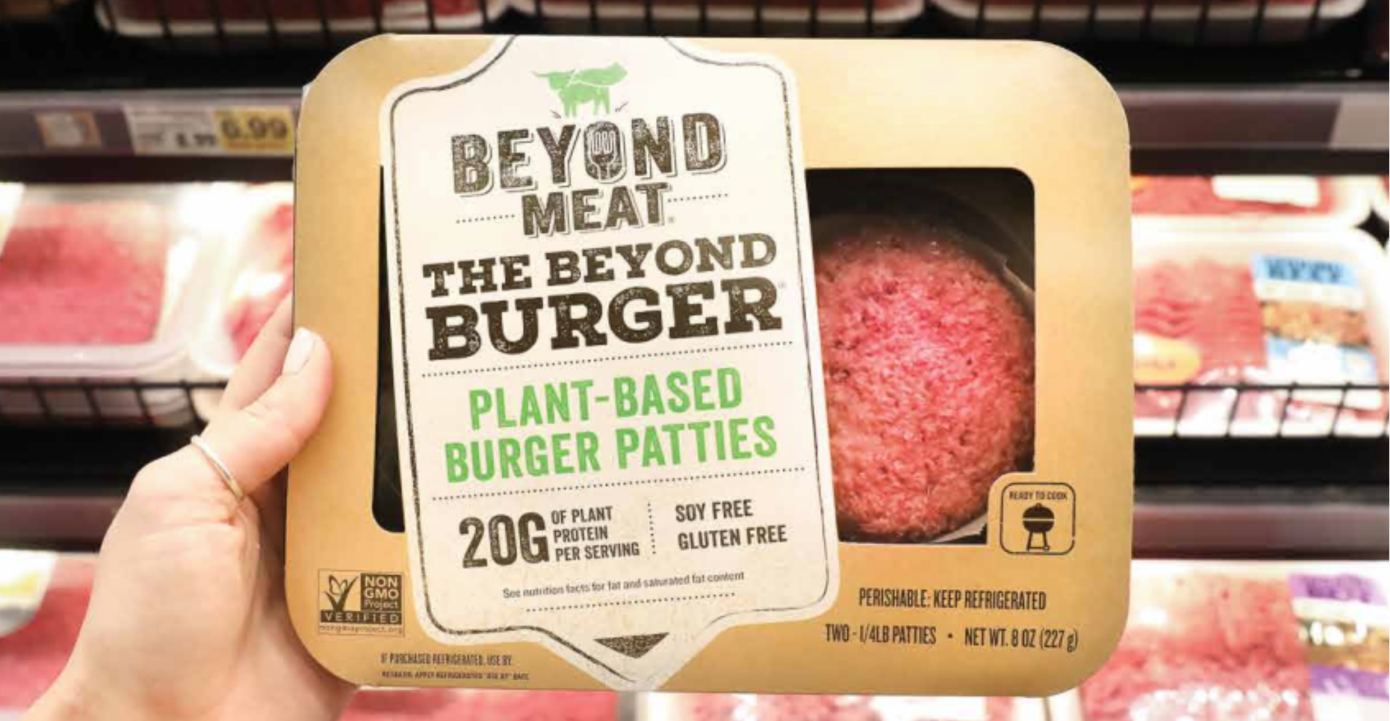
Going Beyond Meat
Meat alternatives and more plant based meals are having a moment as meat becomes harder to get.
As packing plants are shut down around the world, more people are giving meat alternatives a chance. Beyond Meat has been seeing massive growth since even the hint of a meat shortage. More plant based proteins and vegetable forward dishes have also been a part of meals as grocery stores are less stocked and harder to visit. Home freezer space is also limited so people are trying to make what they have work. With increasingly consolidated ownership of meat packing plants and Upton Sinclair levels of bad behavior by many plants, meat has also become political. Will this lead to people refraining from eating corporate meat processed by these companies?
How can we make meat alternatives and plant based diets more palatable to consumers to lighten the burden on meat production?
Near-term, Medium-term, Long-term
References
“Beyond Meat stock price soars amid fear of a coronavirus beef and pork shortage” https://www.latimes.com/business/story/2020-04-25/beyond-meat-coronavirus-beef-pork-shortage
“Coronavirus has put plant protein back on the menu for China" https://www.weforum.org/agenda/2020/04/plants-protein-coronavirus-safety-china/
“The Pandemic Has People Rethinking Their Relationship With Food, Especially Meat” https://wamu.org/story/20/05/04/the-pandemic-has-people-rethinking-their-relationship-with-food-especially-meat/
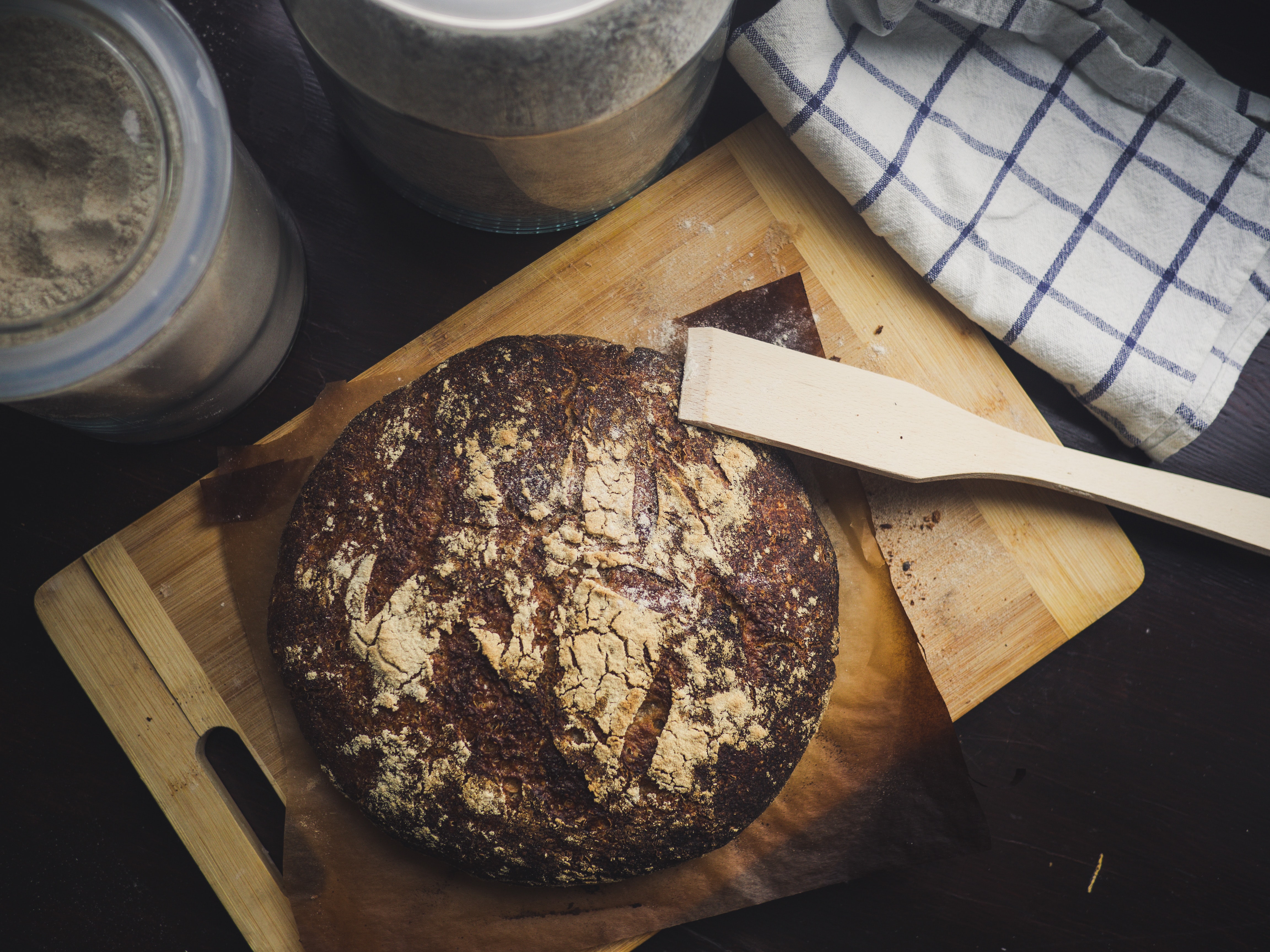
Local Production & Distribution
Building local networks of production and distribution for food to limit travel and fragility in times of distress.
We have optimized our food networks for efficiency, with just the right amount of inventory in stock, and tenuous long distance supply chains. When things are fine, this works well enough for the people that it has been designed for. But when things get weird, or if you are in a more rural area, these malfunctioning systems underserve their customers and put people in danger by making them travel more and interact with more people. Local production brings those supplies closer to home, creating a less fragile system that employs more people, creates healthier food, and enriches our communities. We are seeing more local meat production and butchering, more produce growing, more local grocery stores thriving. Meanwhile large national chains that have become the only options in many cases feel dangerous with too many people in them, and fragile connections to a national supply chain.
How can we stimulate policy that encourages local production and distribution instead of consolidation towards national chains?
Near-term, Medium-term, Long-term
References
“Flour Shortage? Amber Waves of Regional Grains to the Rescue” https://civileats.com/2020/04/24/flour-shortage-amber-waves-of-regional-grains-to-the-rescue/
“Striving to Relocalize Food Production” https://www.governing.com/columns/col-striving-relocalize-food-production.html
“CSA sales were struggling—and then coronavirus hit” https://thecounter.org/csa-sales-struggling-before-coronavirus-covid-19/
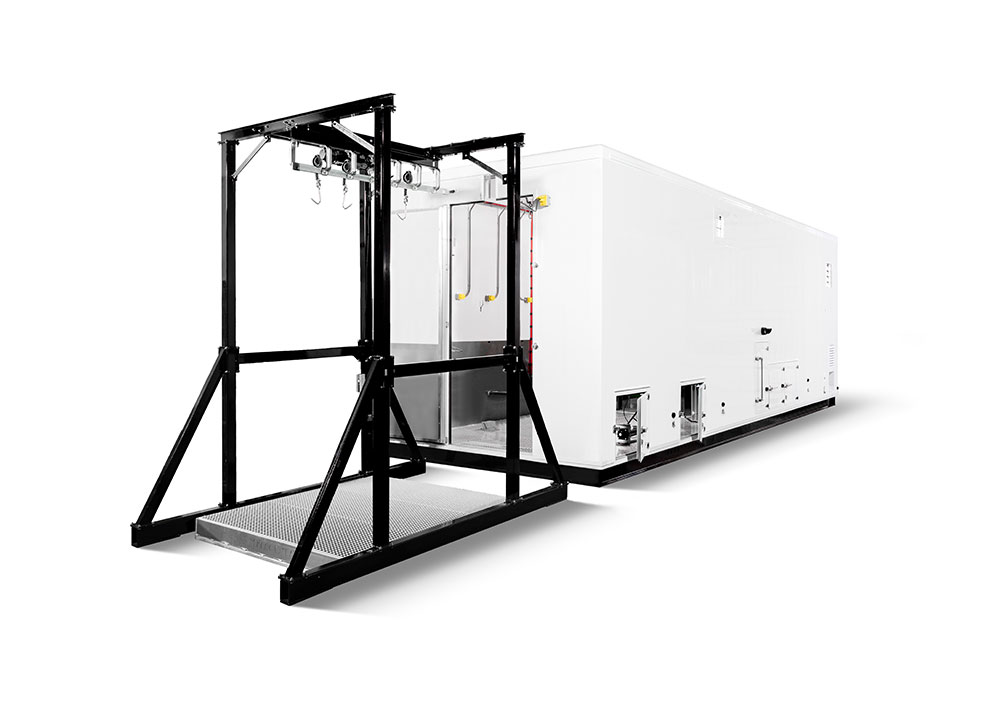
Relocalizing Meat Production
Meat packing and production has been a flashpoint in this crisis, many are looking at how to make it smaller, safer and more local.
The nation has seen a 70% decrease in the number of slaughterhouses since the 1960s while meat production has gone up. This consolidation into a small number of giant facilities has led to much more dangerous working conditions and an incredibly fragile supply chain. Workers are treated poorly and likely when we recover from this plant owners will just turn to automation and robotics if regulation forces real change.
But many are working to relocalize meat production throughout the country including smaller processing facilities, mobile slaughterhouses, and even an increase in hunting to move away from centralized meat. This smaller is better approach will create a much more robust marketplace and will be a boon for more rural areas.
How can meat we bring meat closer to home to give our communities more agency in the food we eat?
Medium-term, Long-term
References
“Facing meat shortages, some Americans turn to hunting during pandemic” https://www.reuters.com/article/us-health-coronavirus-usa-hunting/facing-meat-shortages-some-americans-turn-to-hunting-during-pandemic-idUSKBN22F0G4
“USDA Approved Mobile Slaughter Unit” https://friesla.com/equipment/mobile-slaughter-unit/
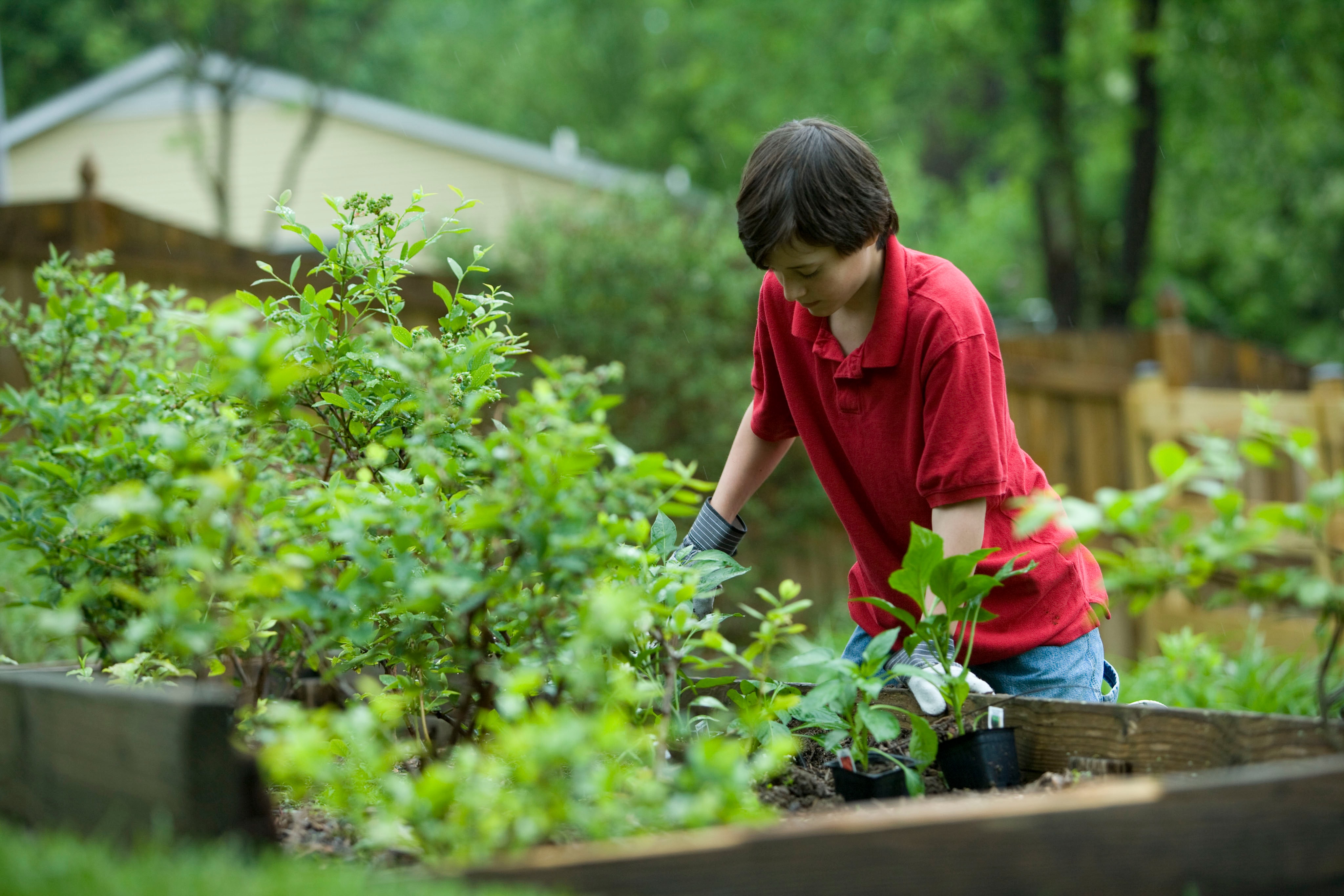
We Can Pickle That!
A boom in gardening and making your own ingredients is fueling a whole new food culture.
Gardening has been one of the go to hobbies during the lock down in the US. Whether for people with yard space, or small balconies or even just a window sill we are seeing people growing their own food out of desire to be more self sufficient, or simply because of shortages. But I also think that gardening is a form of control over the world and an escape into life and growth, so for many this is a psychological exercise as much as a nutritional one. It likely won’t stick for everyone when we recover, much like the WWII victory gardens didn’t, but for many it will become an ongoing habit. There are few things more rewarding than being able to walk outside to pick dinner and the way that it changes how you cook.
How can we make growing your own food easier for people and a pursuit that will stick around?
Near-term, Medium-term, Long-term
References
“How The Coronavirus Pandemic Has Led To A Boom In Crisis Gardening” https://www.huffpost.com/entry/seeds-crisis-gardening-coronavirus-food_n_5e85eca0c5b6f55ebf492212
“Will the Food Habits of Scallion Nation Outlast Quarantine?” https://www.nytimes.com/2020/04/30/dining/fresh-greens-quarantine-coronavirus.html
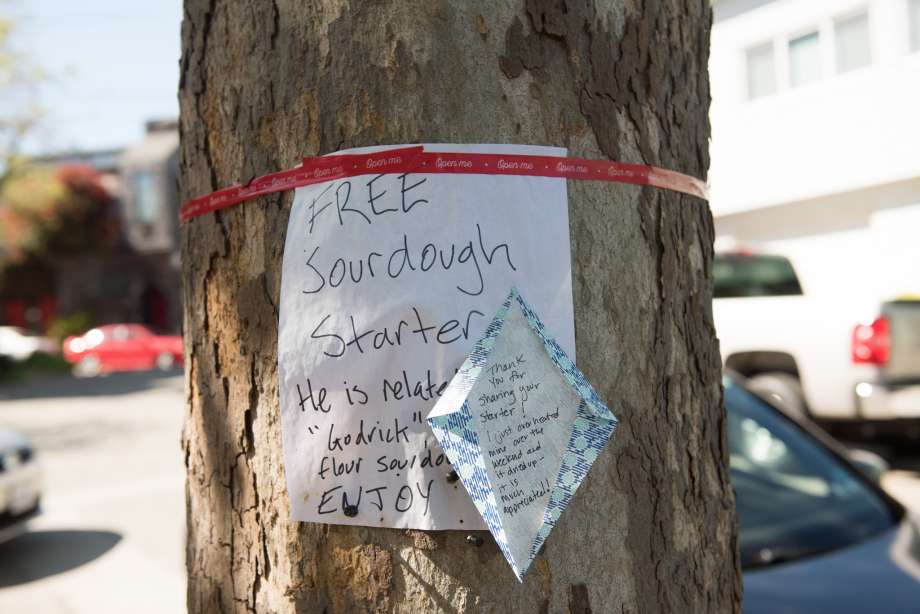
A Communal Concern
A barter economy is emerging around food, seed and veg sharing, ingredient wrangling, and looking out for each other.
This year I have mailed people more seeds than ever before and people are sharing things they have an abundance of in some kind of incredible garden barter system. We’ve had friends mail us homemade za’atar that they made from their garden and neighbors are swapping starts. We’re seeing food pantries getting donations, spreadsheets of what people in the neighborhood need, sourdough starter taped to telephone poles, and seed sharing mailing lists. A community is made of of people looking out for the greater good of all of us, and perhaps this will be the greatest legacy of COVID. Too Naive? Probably, but let’s try.
How can a collaborative, sharing, food culture be leveraged to create a more connected community?
Near-term, Medium-term
References
“Searching for sourdough starter in SF? Check the telephone pole” https://www.sfgate.com/food/article/sourdough-starter-trades-neighborhood-SF-15175164.php
“I grow tomatoes you grow carrots” https://www.reuters.com/article/us-health-coronavirus-gardens/home-gardening-blooms-around-the-world-during-coronavirus-lockdowns-idUSKBN2220D3
“With Online Spreadsheets, Mutual Aid Networks Are Keeping People Fed During Coronavirus” https://www.eater.com/2020/4/20/21221588/mutual-aid-networks-coronavirus-resources-food-meals-groceries-delivery-covid-19
“Philly garden activists are shipping millions of seeds to a nation fretting over food access during coronavirus pandemic” https://www.inquirer.com/real-estate/gardening/coronavirus-victory-gardens-cooperative-garden-commission-philadelphia-20200427.html
Conclusions
Hopefully this has been useful to you in exploring how some food businesses are reacting to COVID. This isn’t comprehensive–as it can’t ever be–given the speed at which things are changing. I hope that this can be used less like an overview or an article, but more as a brainstorming tool and a jumping off point when you think about how to solve some of the problems identified in these trends. And I hope you do tackle some of these challenges as we need our food systems to work better, we need our workers to have a more equitable future, we need less fragile systems and we need our small businesses to thrive and not be replaced by a handful of chains. I’m anxious but hopeful that we can improve here, and I’d love to hear from you what you think.